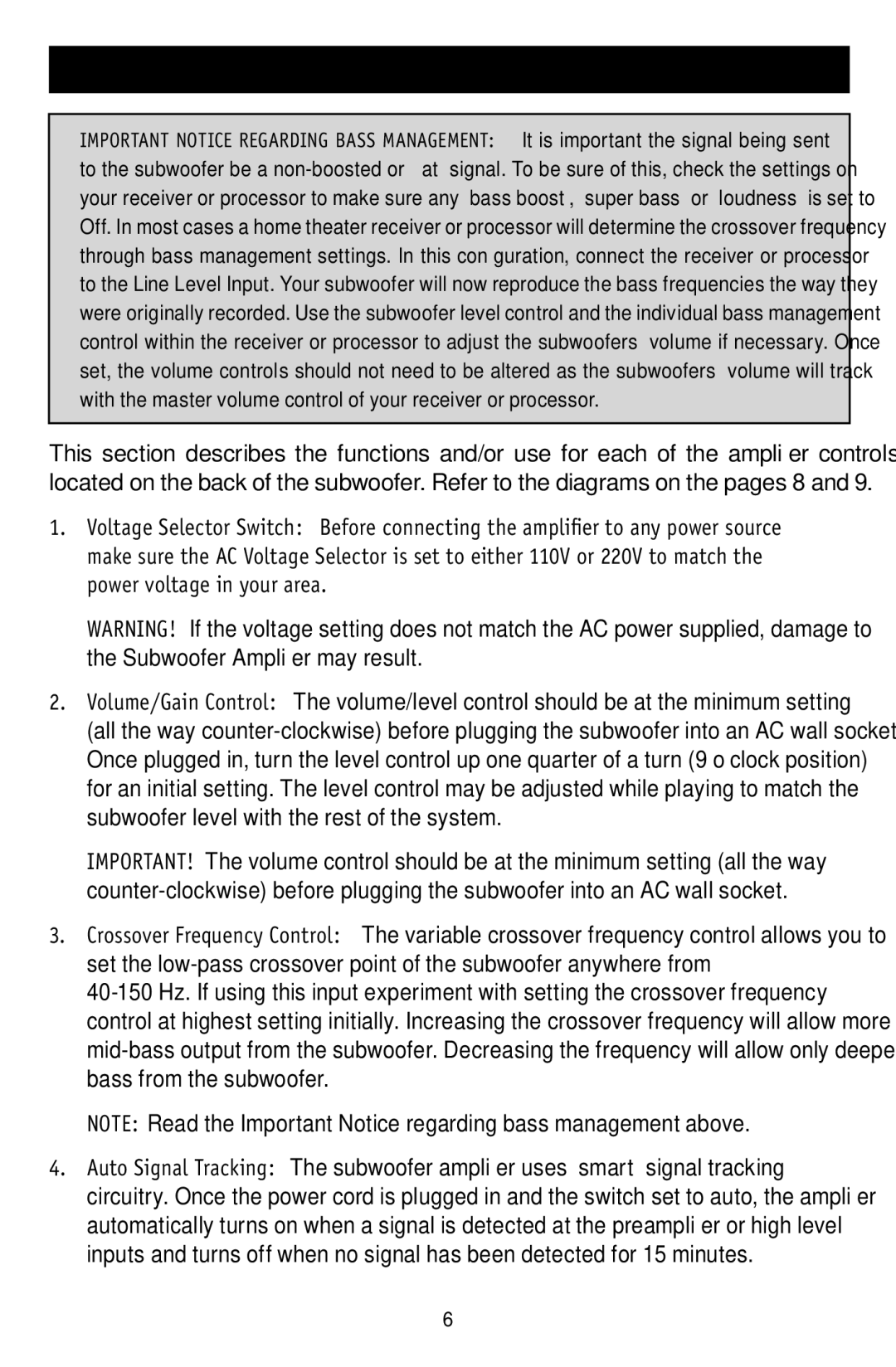S-10, S-12 specifications
RBH Sound is known for producing high-quality audio equipment that caters to audiophiles and home theater enthusiasts alike. Among its impressive lineup are the S-12 and S-10 subwoofers, both of which deliver powerful performance and advanced technologies designed to enhance any listening experience.The RBH S-12 is a robust 12-inch subwoofer that combines extraordinary bass response with refined musicality. It employs a high-efficiency proprietary driver specifically designed to handle the low-frequency demands of modern music and cinema. With an impressive 400-watt RMS wattage and 800-watt peak power, the S-12 is capable of producing deep, thunderous bass that can fill large spaces. This subwoofer features a unique ported design, which allows for greater air movement and enhanced low-frequency extension, ensuring that every note is heard with clarity and impact.
In contrast, the S-10 is a more compact 10-inch subwoofer that still delivers a punchy bass performance but in a smaller form factor, making it ideal for tight spaces or smaller home theater setups. It boasts a 300-watt RMS power rating and a 600-watt peak capability, ensuring that it can still provide an engaging bass experience without overwhelming the room. The S-10 incorporates innovative acoustic tuning technology which allows for seamless integration with the main speakers, providing a balanced sound signature.
Both models utilize RBH's advanced amplifier technology, which includes features such as low-frequency optimization and automatic room correction. This technology allows the subwoofers to adapt to the room's acoustics and deliver uniform bass response throughout the listening area. The powered subwoofers also come equipped with a range of connectivity options, including both line-level and speaker-level inputs, enabling easy integration with various audio systems.
Moreover, the sleek cabinets of both the S-12 and S-10 are crafted from high-quality MDF, finished with a modern aesthetic that can seamlessly blend into any décor. The advanced internal bracing ensures minimal resonance while maximizing the integrity of the sound produced.
In conclusion, the RBH Sound S-12 and S-10 subwoofers epitomize quality, performance, and versatility. Whether reinforcing the dynamic range of music or the explosive effects of a movie, these subwoofers are engineered to elevate any audio experience to unmatched levels. With their advanced features and high-performance capabilities, they remain prime choices for serious audio enthusiasts looking for superior sound reproduction.

